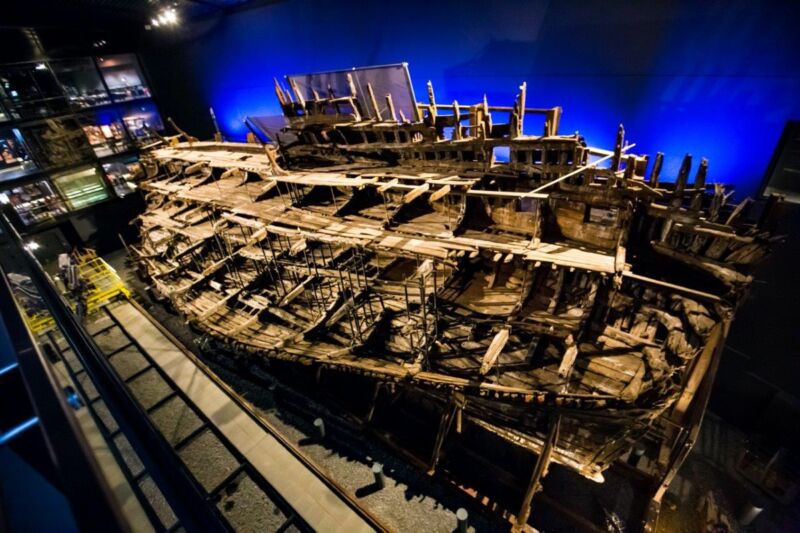X-rays reveal “bacteria poop” is eating away at the Mary Rose’s wooden hull

Enlarge / The hull of Henry VIII's favorite warship, the Mary Rose, and many thousands of recovered artifacts are housed in the Mary Rose Museum in Portsmouth, England. (credit: Johnny Black)
Henry VIII's favorite warship, the Mary Rose, sank in battle in 1545. The shipwreck was successfully raised in 1982, along with thousands of artifacts, and conservationists have worked tirelessly to preserve the ship's remains ever since. Now a multidisciplinary team of researchers has applied a new X-ray technique to analyze the ship's wooden hull. According to a new paper published in the journal Matter, the hull is rife with zinc-containing nanoparticles that are contributing to its deterioration.
"It was especially exciting to get a glimpse into the history of the Mary Rose in the years since it sank," said co-author Simon Billinge, a materials scientist at Columbia University who has a joint appointment at Brookhaven National Laboratory. "The zinc sulphide deposits come from anaerobic bacteria living in the wood as it sat sunk in the seabed-they are essentially bacteria poop. Our results were like a microscale archeological dig where, by studying the location and composition of the deposits, we could see how the bacteria colonized the wood and what they ate."
As we've reported previously, the earliest-known reference to the Mary Rose appears in a January 29, 1510, letter ordering the construction of two new ships for the young king: the Mary Rose and her sister ship, dubbed the Peter Pomegranate. Once the newly built ship had launched, Henry VIII wasted no time defying his advisers and declaring war on France in 1512. The Mary Rose served the monarch well through that conflict, as well as during a second war with the French that ran roughly from 1522 through 1525, after which it underwent a substantial overhaul.
Read 9 remaining paragraphs | Comments